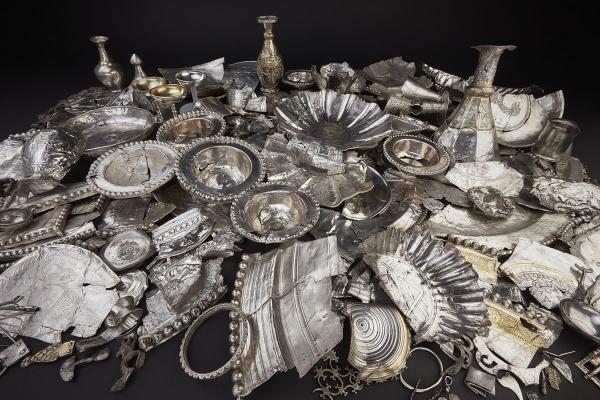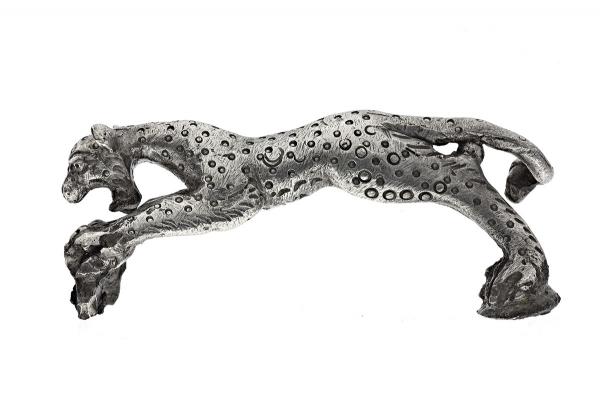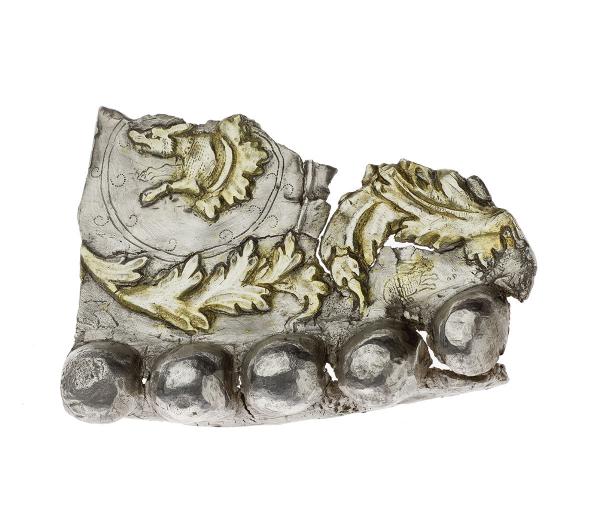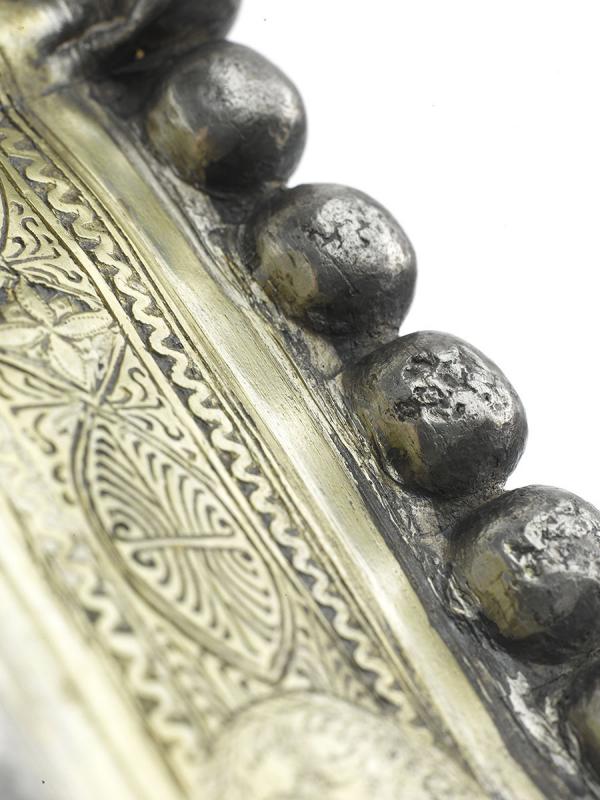The Traprain Law treasure
In 1919 archaeologists discovered a silver treasure hoard during the excavation of the settlement on the Traprain Law (or hill) east of Edinburgh. The explored find comprised scrap silver of vessels and other objects (more than 150 fragments) made in the 4th century in different parts of the Roman Empire, as well as five silver coins. A coin of Western Roman emperor Honorius (395-423) was the latest, which provides a clue as to the time of hiding the hoard: it was presumably buried in the middle of the 5th century.
Most of the pieces were compressed and cut up. Only a few remained in a more complete form or intact. A large part of the hoard comprises fragments of vessels belonging to a late Roman silver banqueting set, fragments of women’s toiletry sets (parts of silver mirrors and ointment pots), as well as items of military clothing (belt buckles, belt mountings and strap ends) and Christian objects, perhaps from a church. Of the dishes used for dining, fragments of eight large wine jugs, five wine goblets, 50 platters, 22 flat round dishes, six square dishes and six spoons were identified. One complete piece is a small ladle with a handle in the shape of a dolphin. While some fragments are plain, some are decorated with gilding and niello inlay.

Apart from geometric patterns and leaf-shaped ornaments, characters of mythological scenes and animal figures can be recognized among the decorations. A few of the dishes in the Traprain Law treasure are ornamented with Christian scenes and symbols. It is noteworthy that the motifs (four-petal rosettes and leafs) on several fragments of dishes is similar to what can be seen on the geometric ewers of the Seuso treasure and the Kőszárhegy stand. Judging by their analogous technique of manufacture it can be presumed that they were made in the same workshop.



The origin of the hoard has not been clarified. The vessels were probably cut up while still in the territory of the Roman Empire so that they would be exchanged or melted as silver metal and made into new objects from the thus gained basic material. Finally the scrap silver may have been given as diplomatic gifts or payment to mercenaries. That was how it must have reached this settlement inhabited by a local population and situated beyond the boundary of the Roman Empire.
The total weight of the hoard is approximately 24 kilograms and its value in gold amounts to 1.454 kilograms. Up to today it is still the largest treasure of scrap silver from the territories beyond the borders of the Roman Empire.
Read more about the hoard:
Traprain Law treasure, National Museums Scotland
Scotland's Early Silver: Traprain Law Treasure
A century of silver: the Traprain Treasure on its hundredth birthday
Digital reconstruction of a dish fragment
Traprain Law dish, National Museums Scotland
Bibliography:
Curle, A. O.: The treasure of Traprain, Glasgow 1923
Painter, K. – Hunter, F.: Late Roman silver: the Traprain treasure in context, Edinburgh 2013




